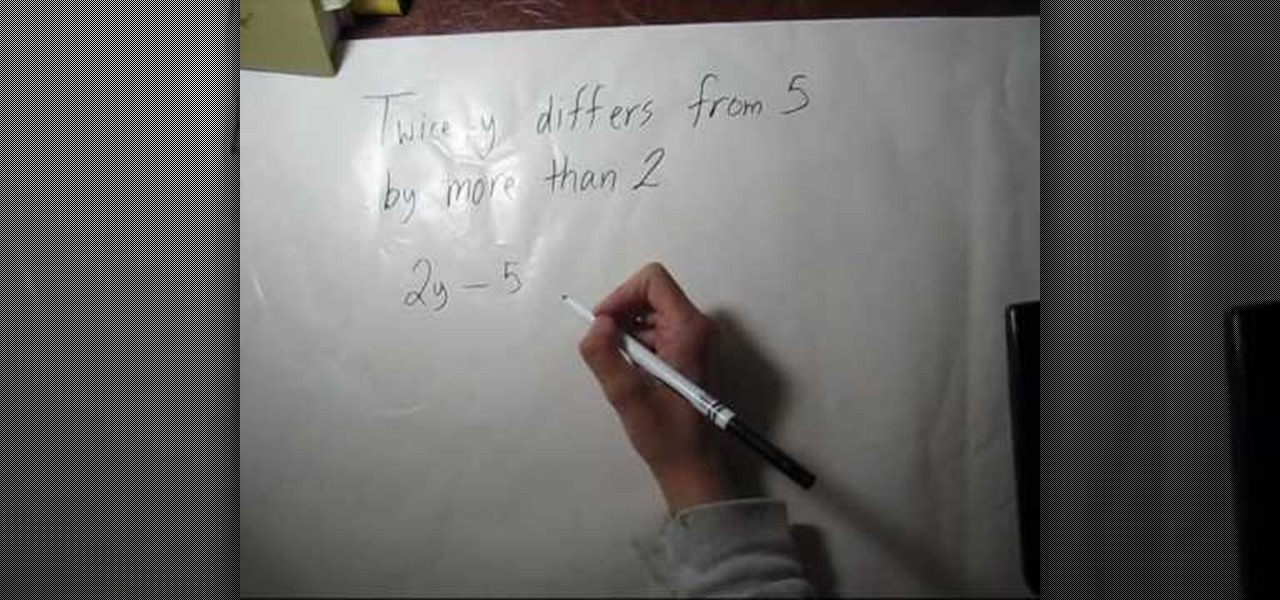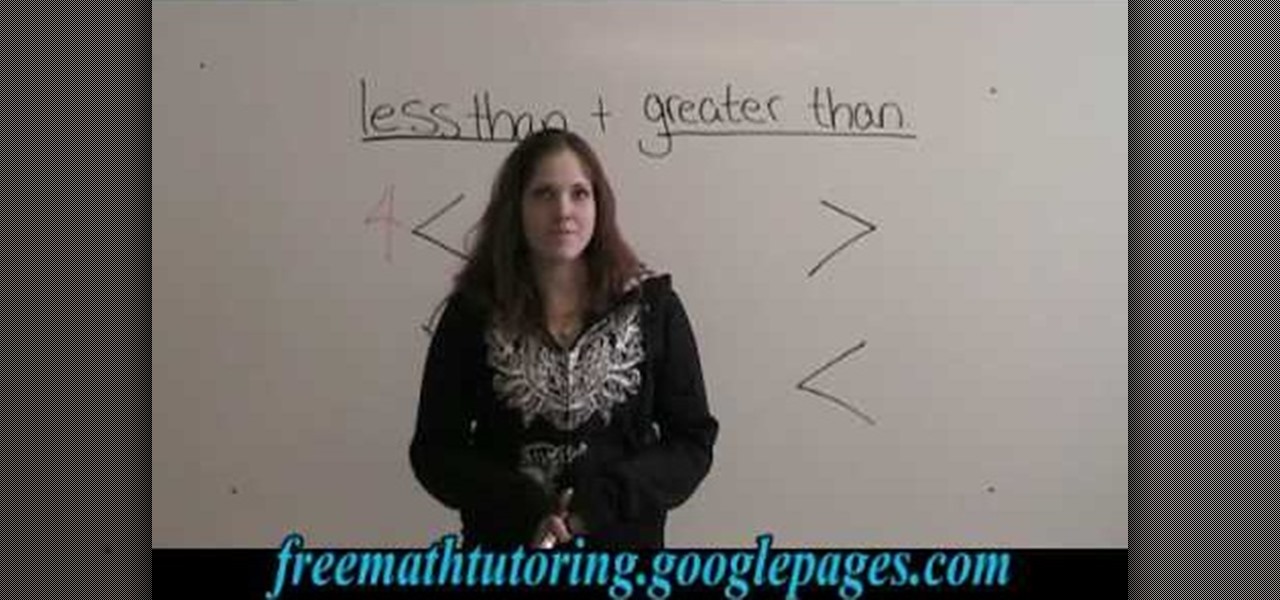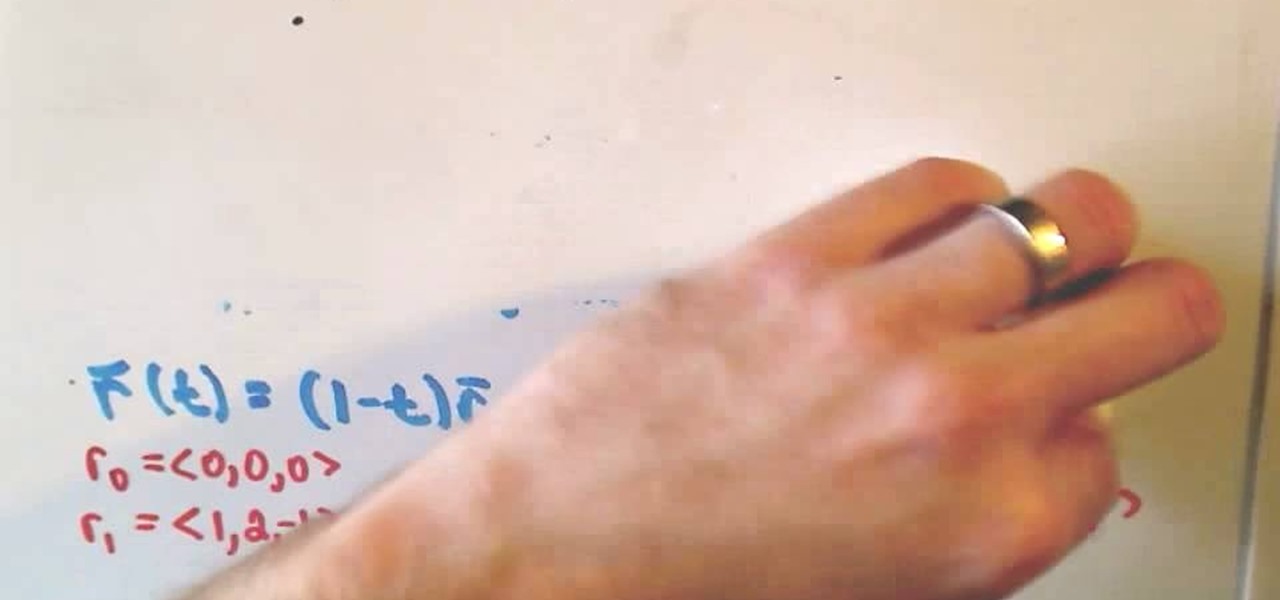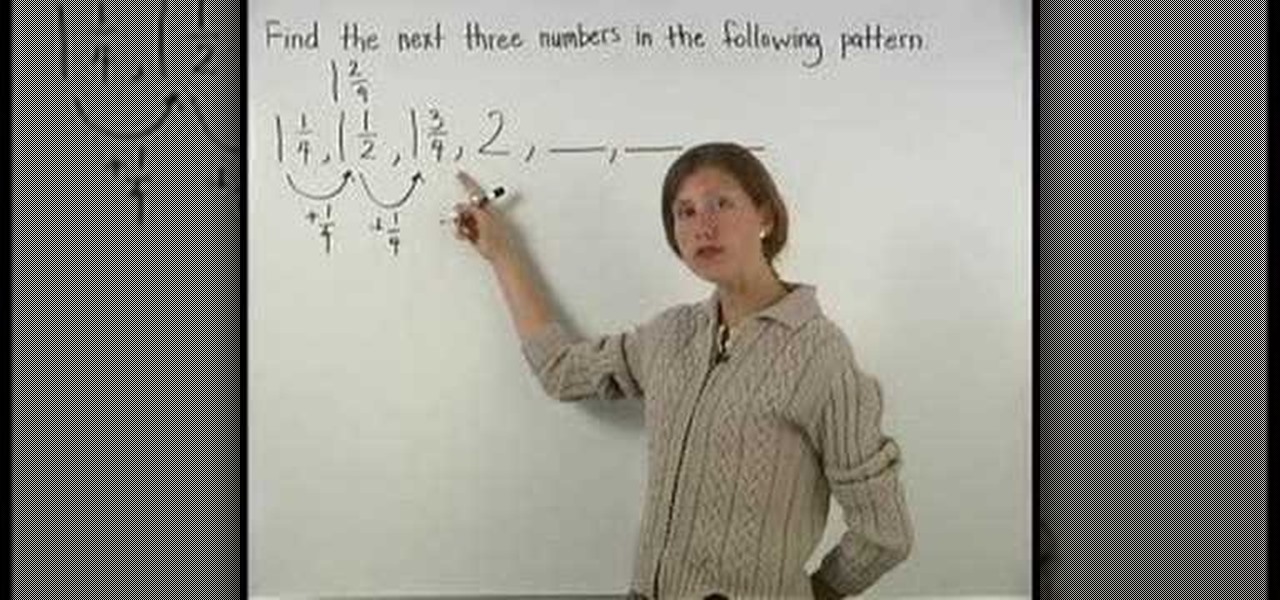Math How-Tos

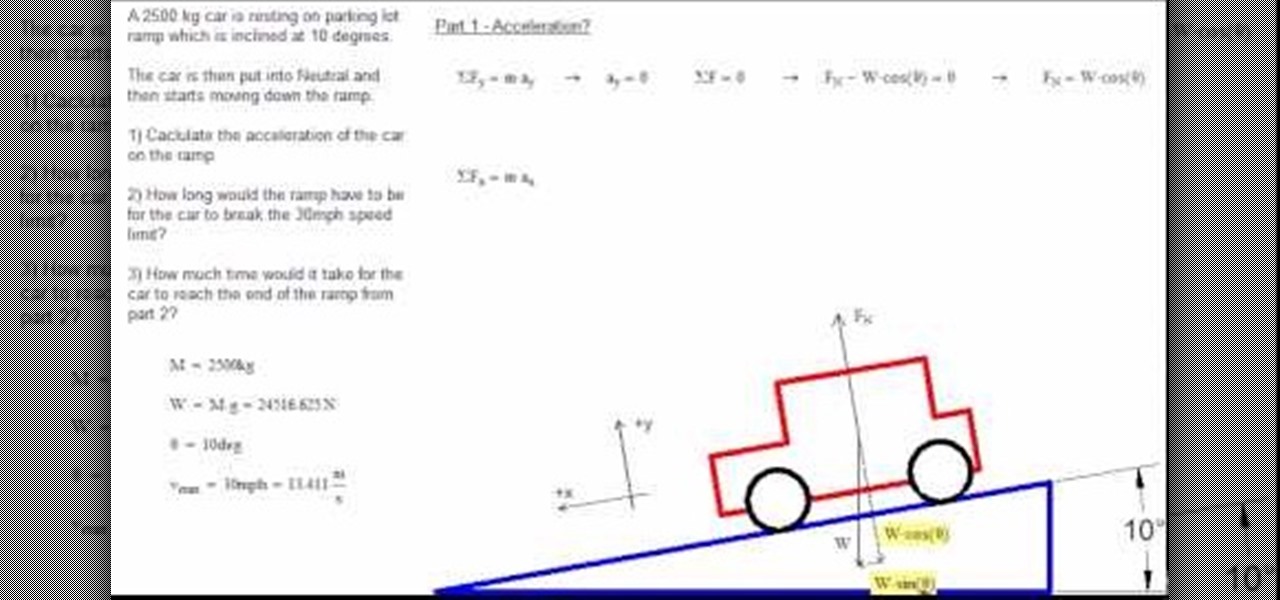
How To: Calculate the acceleration of a car on inclined plane
In this video tutorial the instructor shows how to calculate the acceleration of a car on an inclined plane. He goes on to solve a problem he came across which is based on the acceleration of a car on an inclined plane. He shows how to solve this problem by showing how to extract the data from the question and draws a diagram to get a clear understanding of the problem. Now he marks the forces acting on the vehicle and goes on to specify his axes and how to split the components of force along...

How To: Use the Grouping factoring method
This video is about using the grouping factoring method. We're using a four term polynomial. There is a even number of terms. We can break them into two groups of 2. The first group of "2" the common factor is "a." The last group, the common factor is "-2b". The reason we use -2b is to assure that what is in the first group is the same as the second group. Because of the distributive property of multiplication over addition, we take the a-2b and put it in one bracket. Multiply by 3x+1. With 6...
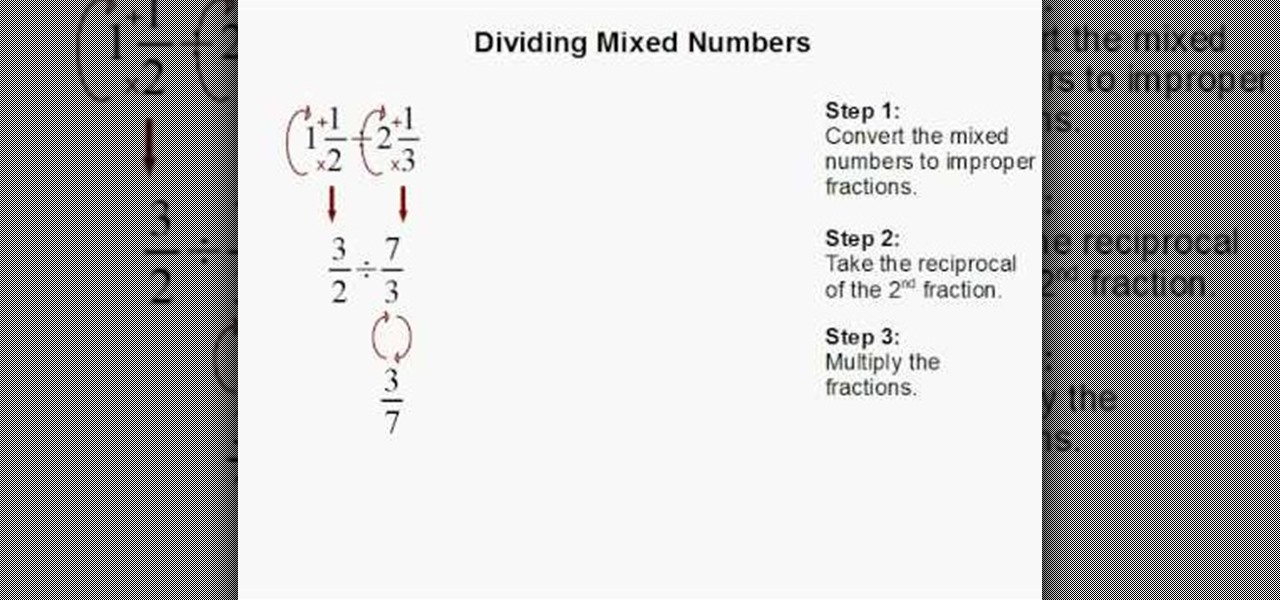
How To: Divide mixed numbers quickly and easily
Dividing mixed numbers may seem like a complicated operation. However, this brief video makes it simple. The illustrations in this video show you step-by-step how to divide mixed numbers using a very simple method. It involves taking the reciprocal of the second fraction. This math tutorial takes you the rest of the way and simplifies mixed number problems.

How To: Solve direct proportions
You can solve any proportion using the fundamental rule of proportions. First you must build the proportion if you are given a word problem. Decide using logic whether it is a direct proportion (more on one side means more on the other). If so, find the parts of the equation that use the same units and make a fraction with these, putting the smaller number on top. The number left over is linked with one of the other two numbers in the fraction--use logic to figure out which. Put it in the sam...
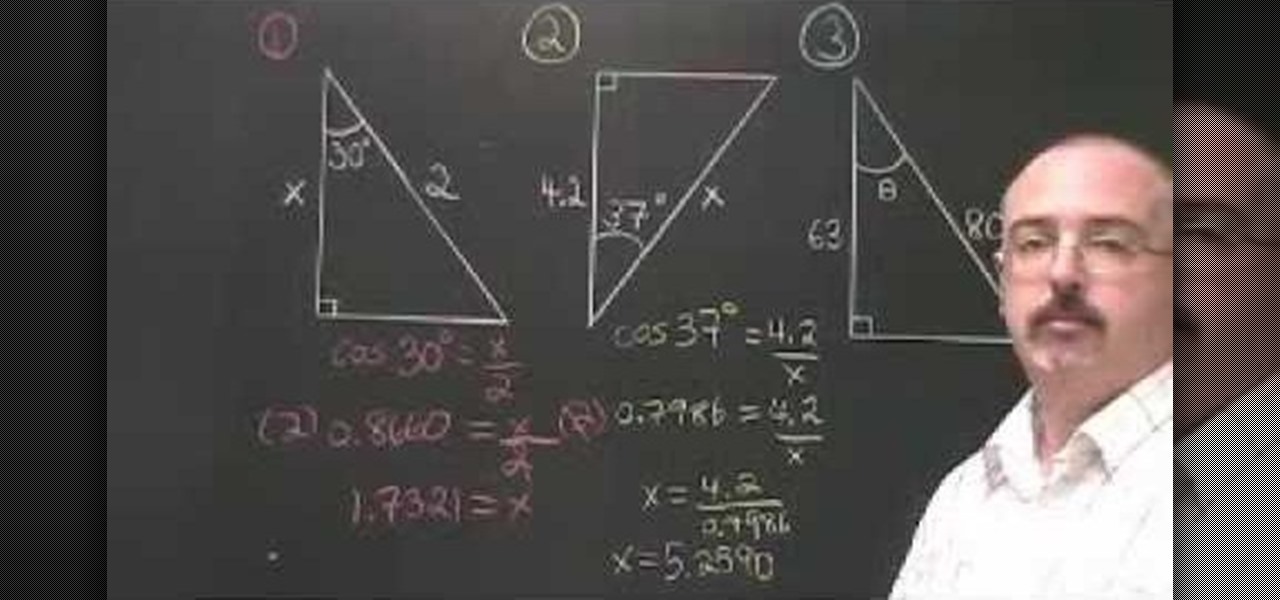
How To: Understand the CAH formula
In order to find the cosine of a triangle in trigonometry, you will need to understand the CAH formula, part of the larger mnemonic of SOHCAHTOA, which outlines how to find the sine, cosine, and the tangent of an angle. The video offers accurate diagrams as well as examples in order for their viewers to better understand the CAH formula. The CAH formula simply outlines the fact that the cosine is equal to the length of the adjacent side of the triangle over the hypotenuse of the triangle. By ...
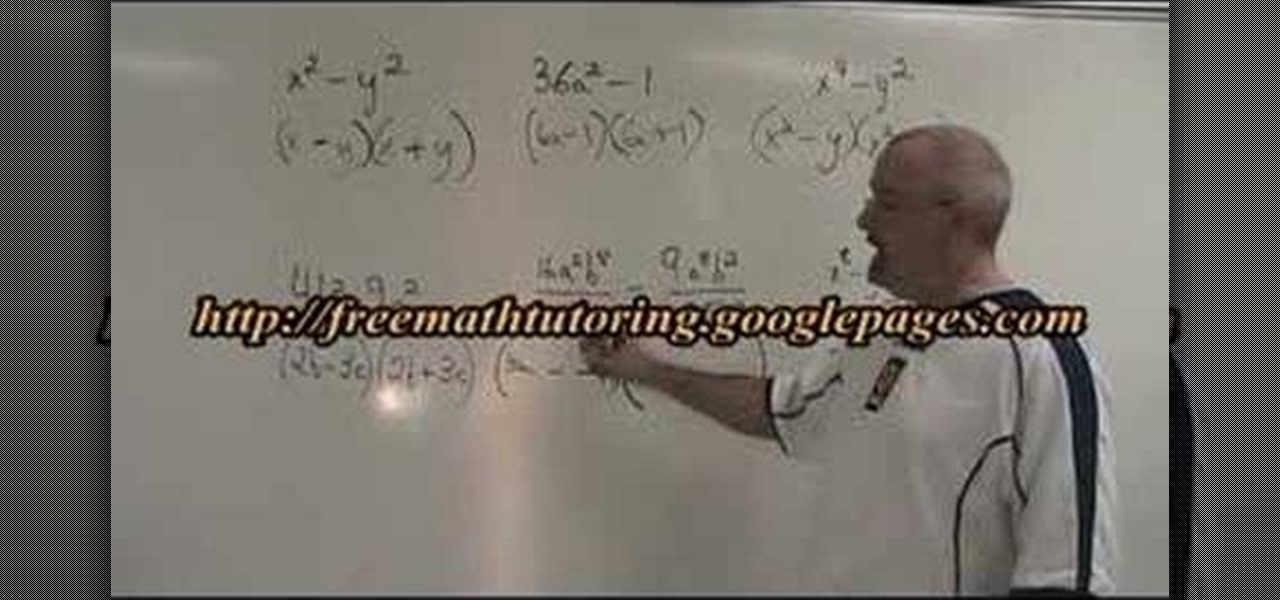
How To: Use the Difference of Squares factoring method
For more advanced math, you will need to use the difference of squares in order to factor certain polynomials. This video offers the basic technique for this factoring method as well as a few examples to get you started. In order for this factoring technique to work, you will need two numbers which are squares and are being subtracted from each other. The two factors will be the original numbers added to each other as well as subtracted from one another. This fast and simple factoring method ...

How To: Calculate acceleration of a car
This video teaches how to calculate the acceleration of a car. The information for this calculation is for a car that accelerates by 12 meters per second in a time of 3 seconds. So to calculate acceleration use the following formula: acceleration equals change of speed divided by time. So, using the information provided for this calculation, acceleration equals 12 meters per second divided by a time of 3 seconds. So this gives an acceleration of 4 meters per second squared.
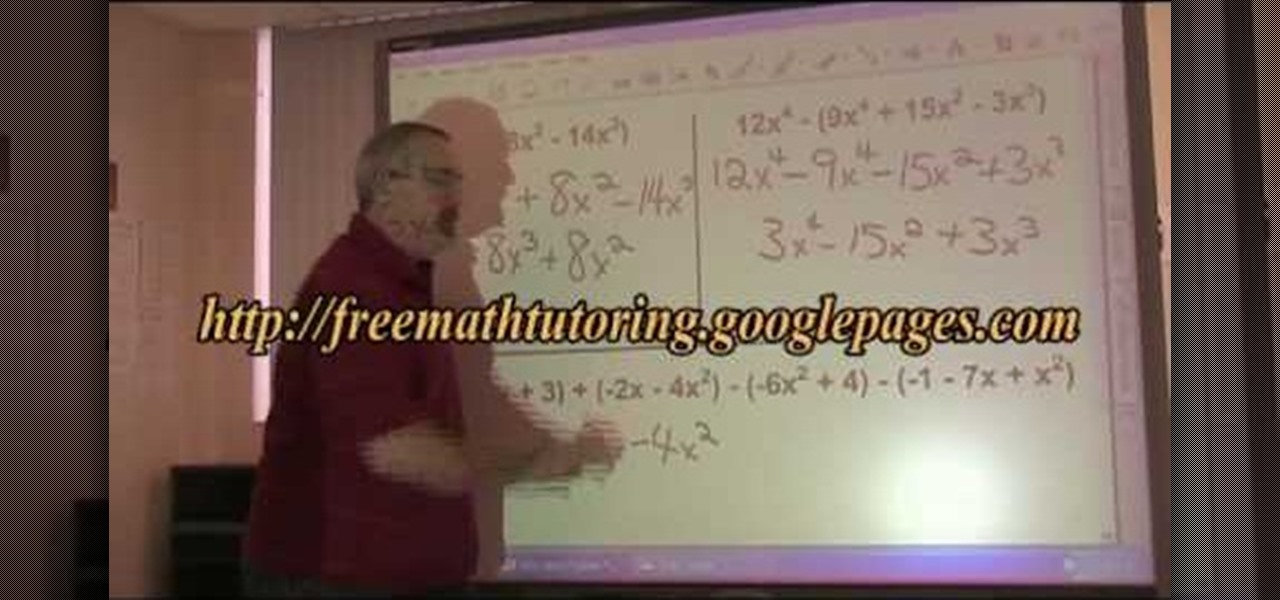
How To: Deal with brackets in polynomial fractions
When dealing with brackets in polynomial problems the first thing you need to notice is if there is a negative sign before the bracket. If there is not then all you need to do is get rid of the bracket and combine similar terms. If there is a negative sign then you need to multiply everything inside the bracket by a negative 1. This will change all of the signs inside the bracket. This video is a quick demonstration that will help you when completing these problems.

How To: Solve math proportion problems
Look for a vertical or horizontal relationship in the given equation. In the horizontal or vertical side of the equation where both numerator and denominators are given, look for a multiplier to the smaller number so that the product is equal to the bigger number. Use this multiplier to multiply it with the smaller number on the other side of the equation and you will get the value of "x".

How To: Add fractions with uncommon denominators quickly
This how-to video explains about how to add fractions with uncommon denominators. To add fractions with uncommon denominators three steps are involved:
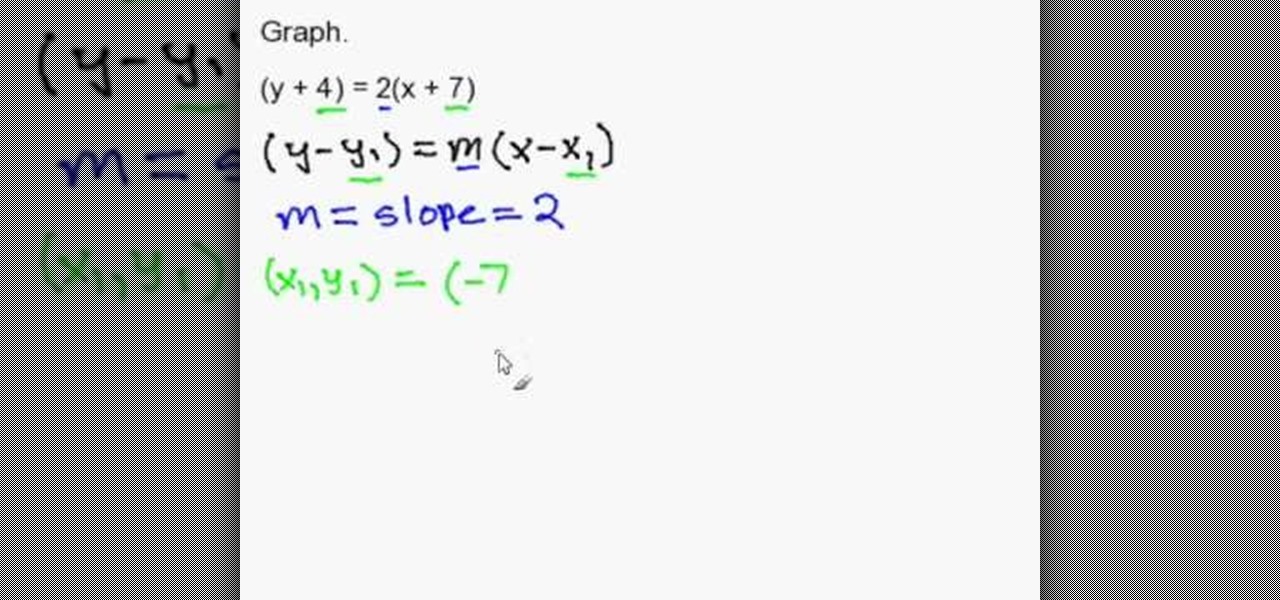
How To: Graph an equation in point-slope form
This video tells you how to draft an equation in point-slope form. Consider the equation (y+4) = 2(x+7) for example. The formula for the point-slope form is (y-y1) = m(x-x1). To plot the graph you have to identify m the slope, the x intercept x1 and the y intercept y1. In this equation the slope is 2 and (x1,y1). The x intercept according to the formula is -x1 but the given value is +7 so you have to figure out what will give you +7,only -(-7) can give you +7 so the point is -7 and now the y ...

How To: Factor & simplify different algebraic expressions
Math Made Easy offers some great SAT Test Prep. It helps you master the factoring and simplification of any kind of algebraic equation or expression. An expert math instructor provides easy to follow real-time chalkboard examples to help you work your way through step-by-step. It discusses when and when not to use the FOIL method. It demonstrates some of the most common factoring problems that you are likely to see on the SAT. With Math Made Easy, you don't have to let those trinomials scare ...
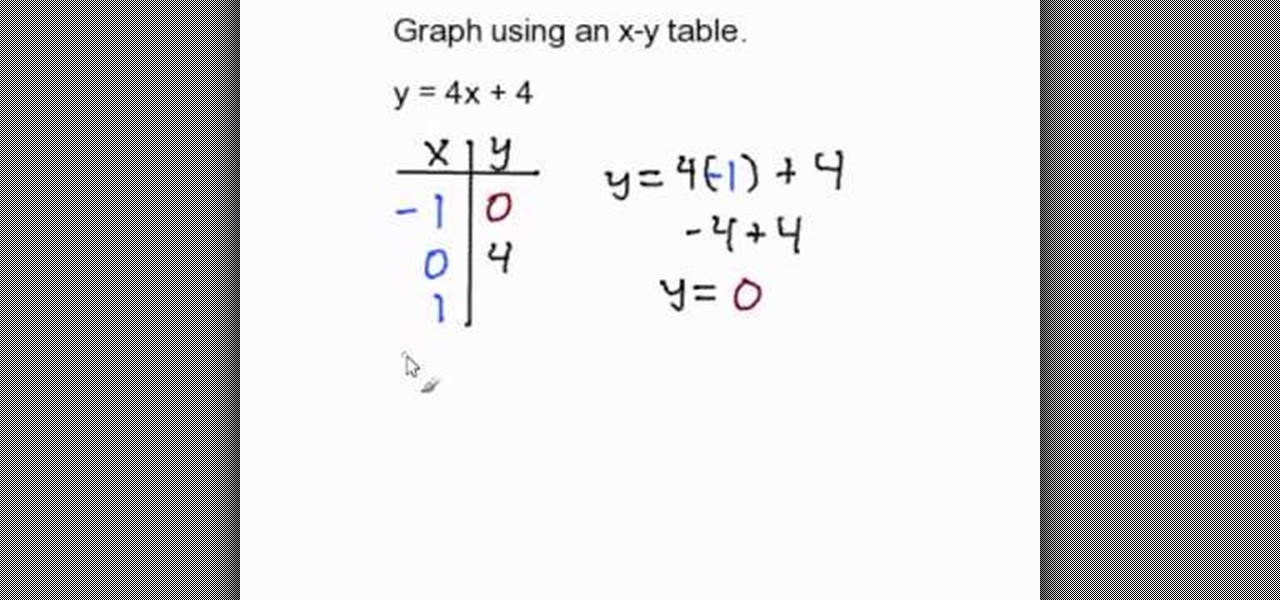
How To: Graph by using an X-Y table
In this video the author shows how to graph using an X-Y table. He shows how to do this with a sample equation. He builds a table of x, y values where he takes sample values for x like -1, 0, 1 and now he substitutes these values in the equation of the line and obtains the corresponding y values. Now finally he has an x, y value table which now he shows how to plot it on a coordinate plane. He plots all the three pairs on the graph and connects them with a line finally obtaining the resultant...
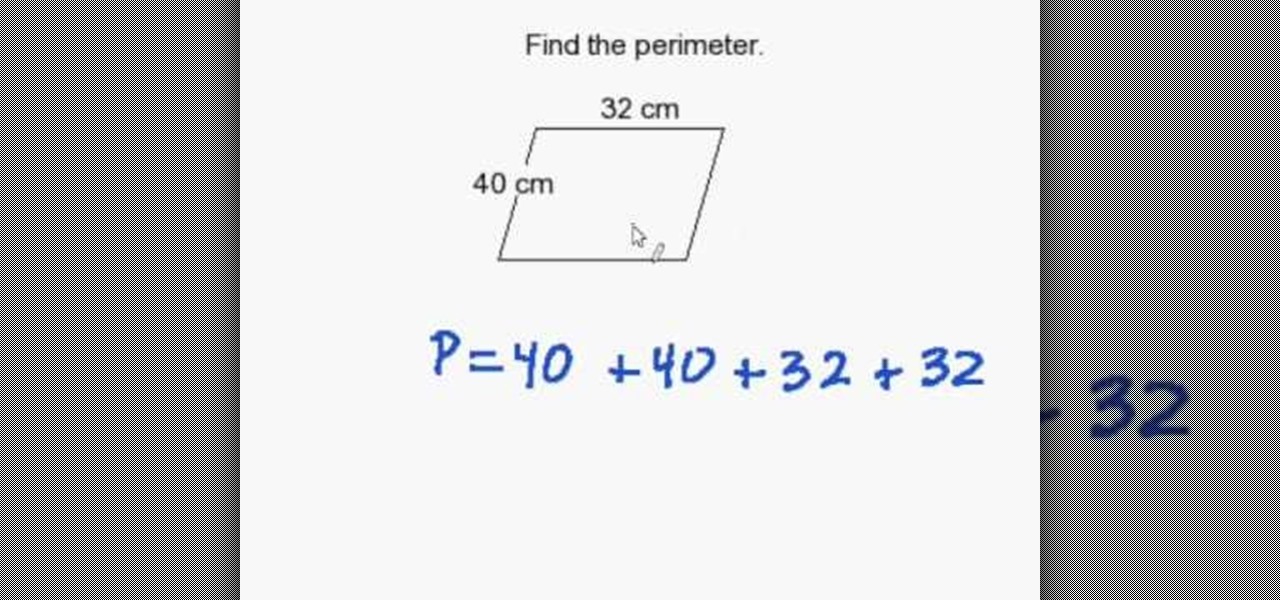
How To: Find the perimeter of a parallelogram
One thing that you will need to know in order to pass Geometry is how to find the perimeter of a parallelogram. Parallelograms are quadrilaterals with two pairs of parallel sides. It is not difficult to find their perimeter, but you will need to know a few steps. Check out this video for tips on how to do this in your math class and ace that big test.

How To: Find the volume of a cylinder quickly
In this video the tutor shows how to find the volume of a cylinder. He relates the cylinder to real world examples of cans etc. Now he states the formula of the volume of the cylinder as the area of the base circle multiplied by the height of the cylinder. So the formula turns out to be V = Pi * r * r * h, where r is the radius of the base circle and h is the height of the cylinder. He solves a sample example to give you the idea of the problem. This video shows you how to find out the volume...
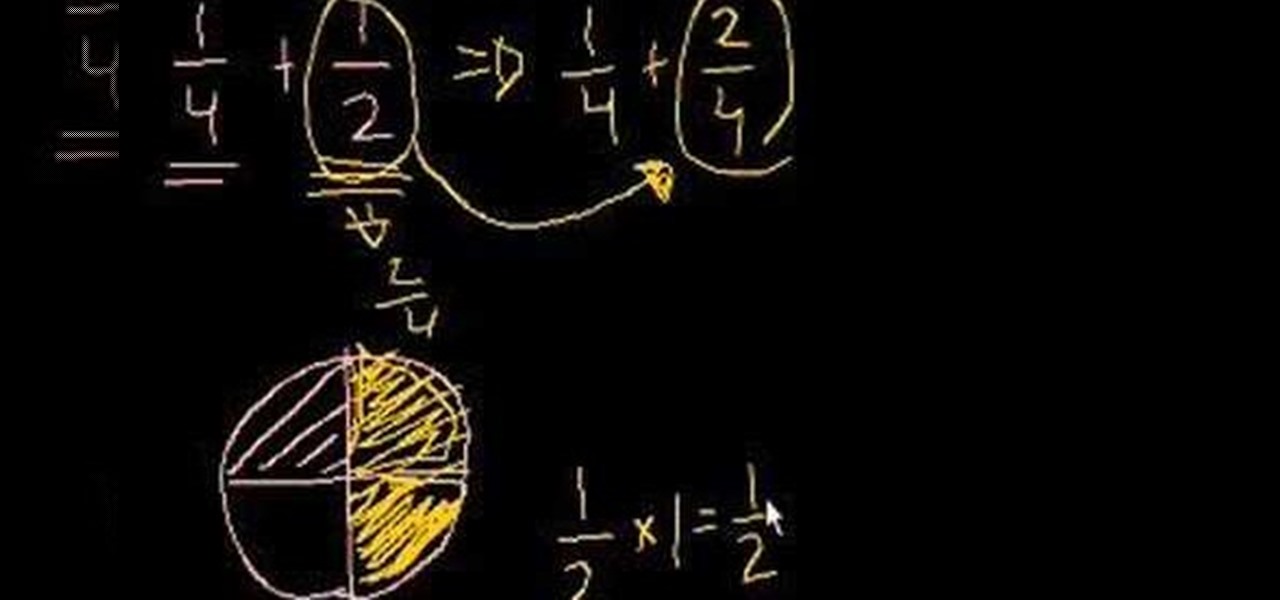
How To: Understand adding and subtracting fractions
The video creator attempts to teach us how to add and subtract fraction. He goes very slowly and assumes that the viewer only has a very basic knowledge of math. He starts with a division of a pie. If we were to divide a pie into four pieces, you would get four pieces of a pie. If I ate one, there would only be three fourths of the pie left. He uses this basis in order to explain this mathematically.
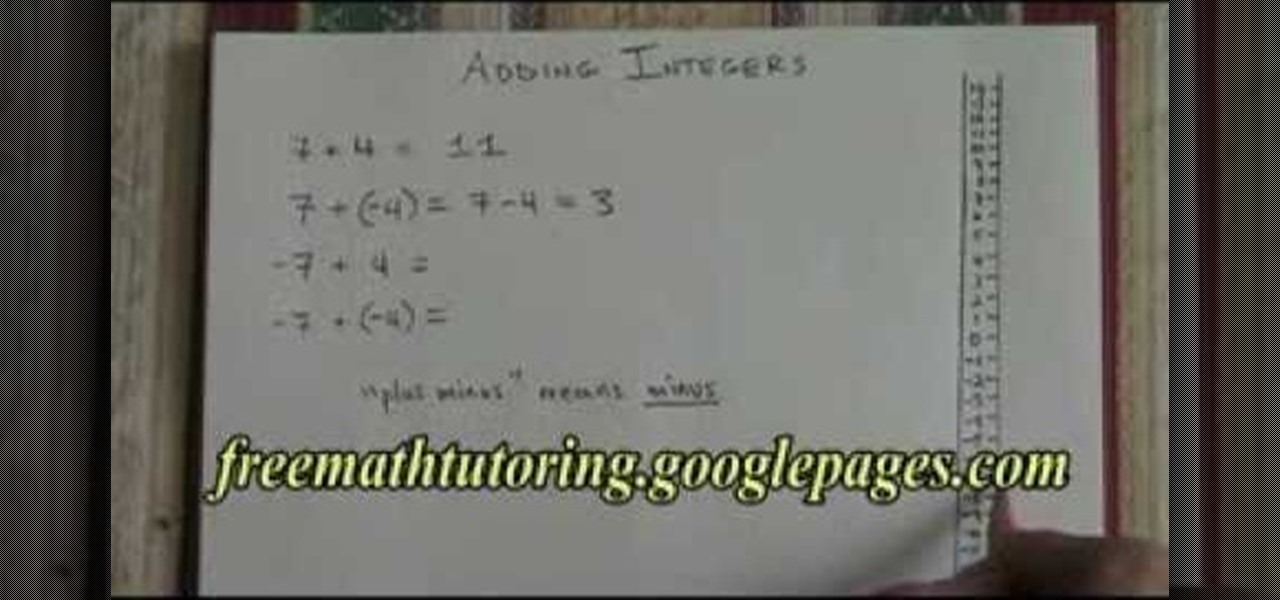
How To: Add integers
Adding integers is a basic tool used in high school math. If you are having trouble adding your numbers together properly, check out this tutorial. This video will show you step by step the rules of addition and offer tips for accomplishing this more easily.

How To: Subtract fractions with borrowing
This how-to video describes how to subtract fractions using the borrowing method. The video shows viewers everything they need to know including basic subtraction of fractions, how to find common denominators, to the more difficult borrowing techniques. The narrator in this video does a great job of keeping things simple enough for anybody to understand. At the same time, he goes in depth enough that you really get how to use this technique. The voice in this video is very calm and clear. Thi...
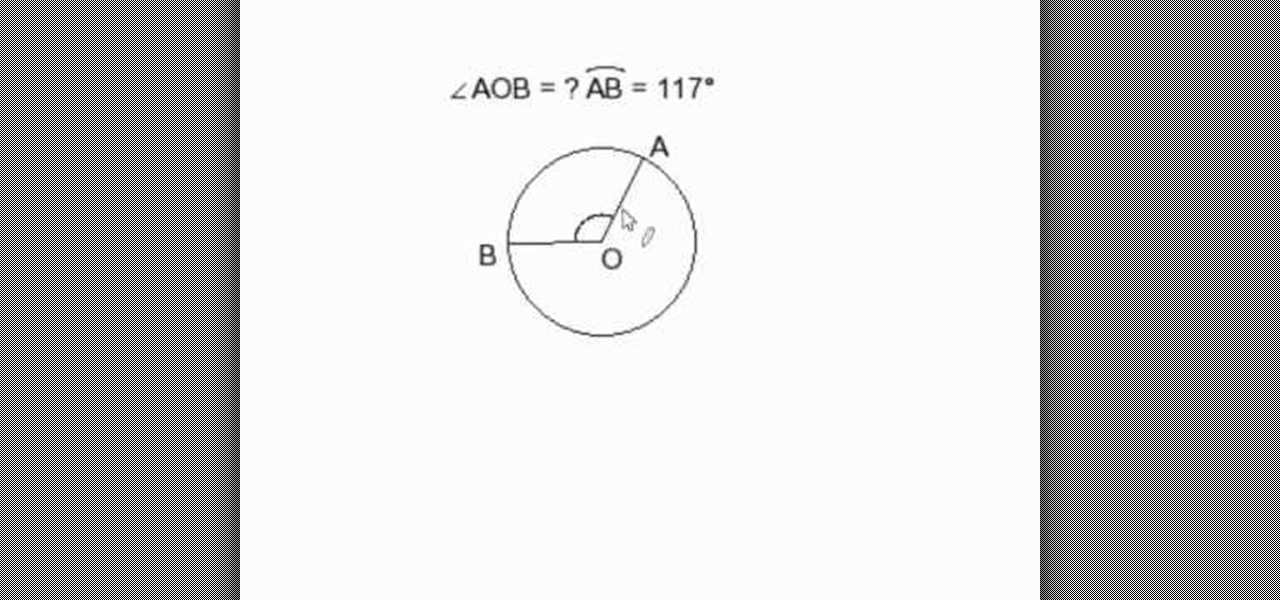
How To: Find the central angle w/ the corresponding arc degree
In this video the author shows us how to find the measure of a central angle when its corresponding arc degree is given. He shows how to solve this kind of problem by solving an example. He states the central angel made by the arc is nothing but the given arc degree and states that both are one and the same. The author in this video gives a quick example of what a central angle is and its relation to the arc degree.

How To: Find the number given its percent
This video will provide you with insight into how to find a number given its percent. In the example provided, you needed to find the number which 33 is 60% of. This was achieved by simply taking the number which is a percentage of another number, in this case 33, and divide it by the percentage, in this case 60%, or 0.6. By carrying out the long division from this step, you will be able to find the original number and solve this seemingly complicated problem with ease.
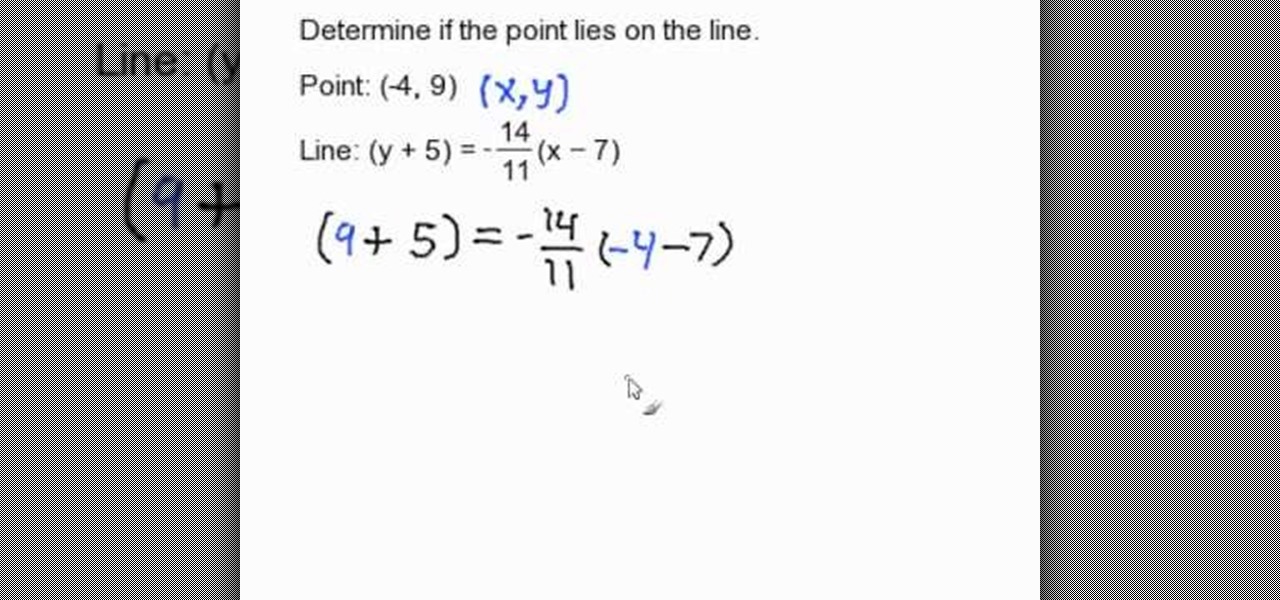
How To: Find if a point lies on a line in point slope form
In this tutorial, the author shows how to determine if a point lies on a given line which is in Point Slope Form. To show the method he takes a sample point order pair and an equation of a line in its point slope form. Now he substitutes the value of the x, y order pair and the equation of the line, and solves the equation on both the sides. If both sides match it means that the point lies on the given line, or else it does not lie on the current line. In this video, the instructor shows how ...

How To: Convert fractions to percents in two steps
This video shows you how to easily convert fractions to percents. You can convert fractions to percents in 2 easy steps. The first step is multiplying the fraction by 100 (e.g.. your fraction is 3/5; 3/5 x 100 = 3/5 x 100/1 = 300/5). The second step is reducing the fraction, when possible (e.g.. 3/5 x 100/1 = 300/5 = 60). Don't forget to add the percent sign (%)(you obtained 60%). That's it! Good Luck!
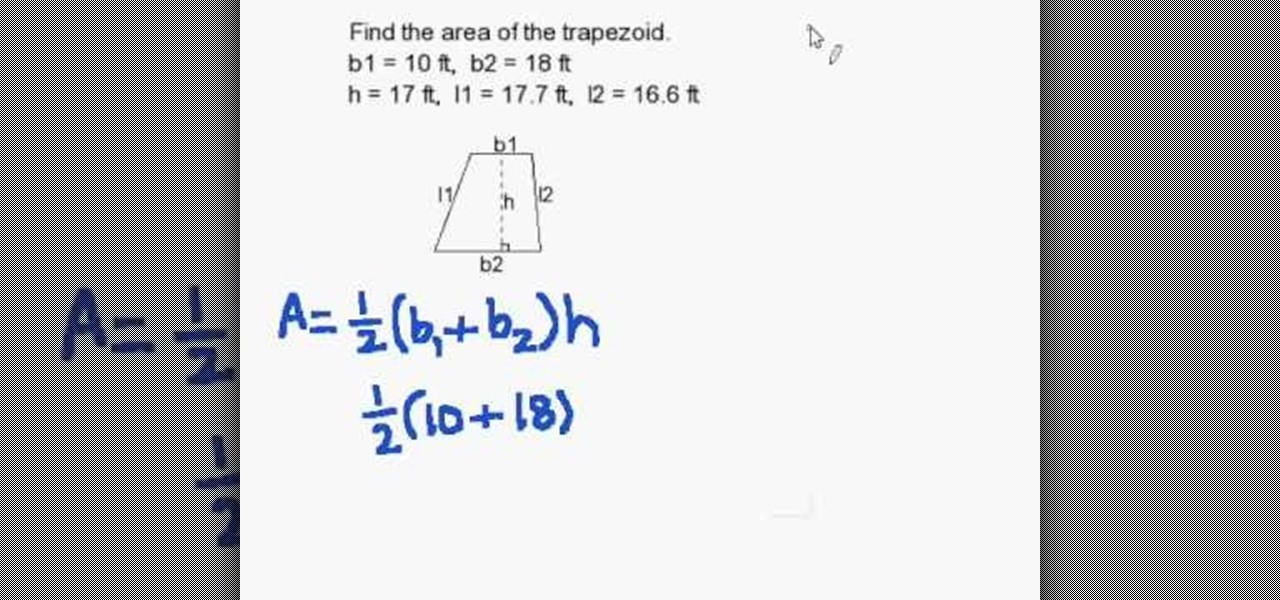
How To: Find the area of a trapezoid quickly
In another installment of Math Problem Generator this video shows how to find the area of a trapezoid. First it displays the dimension of the triangle, with the corresponding formula to find the area. This quick and easy demonstration shows how to plug in the correct dimensions into the formula. From there you use the order of operations to solve the formula correctly. The video will teach you the basic procedures in solving for the area of a trapezoid, and will help you take on more complex ...
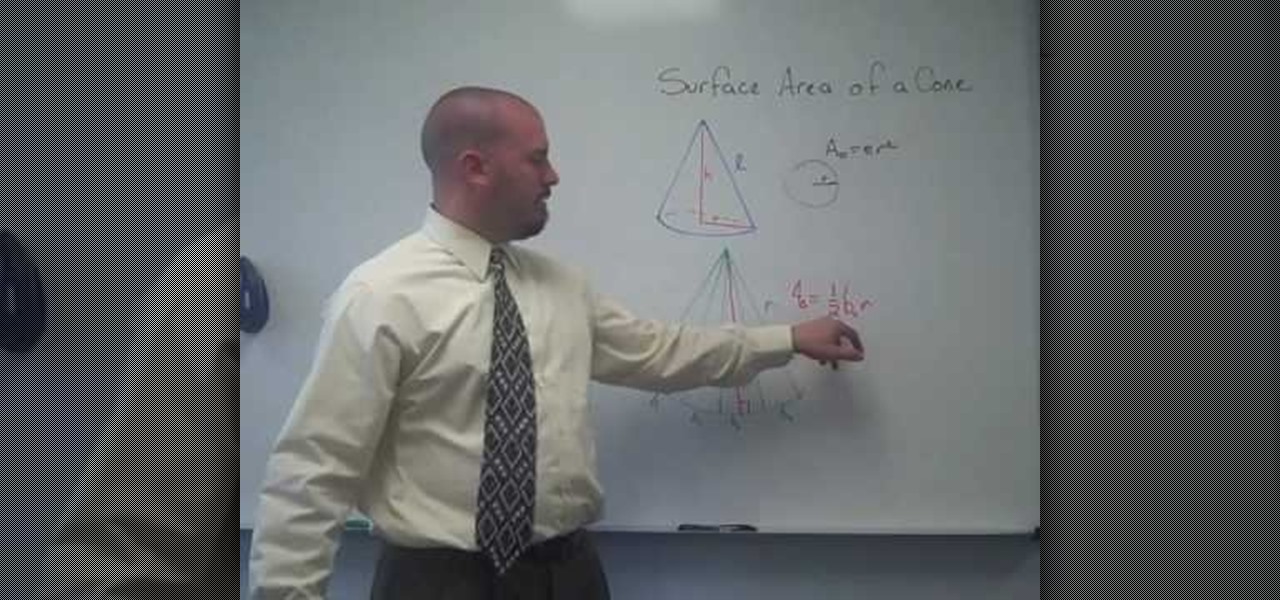
How To: Find the surface area of a cone shape
In this tutorial the instructor shows how to compute the Surface Area of a Cone. He explains that you need to find the individual surfaces areas first. Hence the bottom part of the cone which is circular can be calculated as Pi*r*r, where r is the radius of the base circle. Now for the sides surface of the cone, it looks like a sector and he derives its area thorough some deduction. Now he adds both the base surface area of the cone, and the lateral surface of the cone which finally gives the...

How To: Divide a decimal number by another decimal number
Decimals are just as complicated as fractions, but they are written a bit simpler. In this video, learn how to divide a decimal number by another decimal number without a calculator. Follow the step by step presented in this tutorial and practice this method and it won't take you long to get it right everytime.
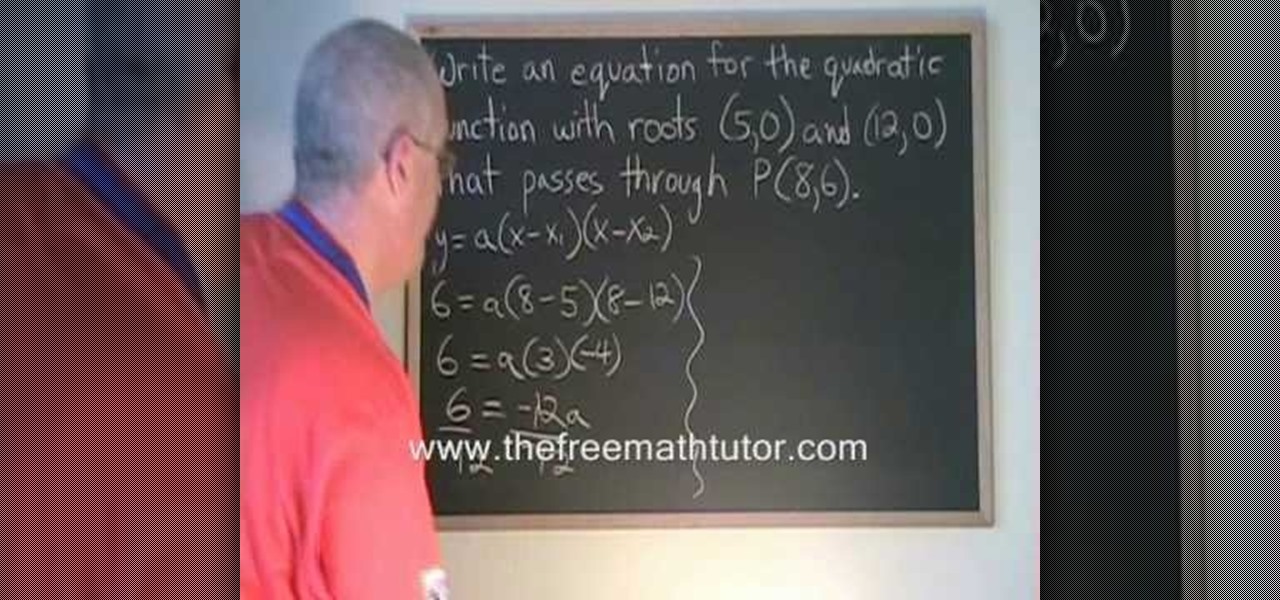
How To: Derive a quadratic equation, given the roots
This video shows you how to get the quadratic equation for the quadratic function with roots; (5,0), (12,0) which passes through the point(8,6). It shows a man solving this problem using a black board and chalk to clearly demonstrate the method of plugging in the respective coordinates to arrive at an answer. After watching this video, any person over the age of twelve will know how to use quadratic functions to derive quadratic equations and solve mathematical problems with this particular m...
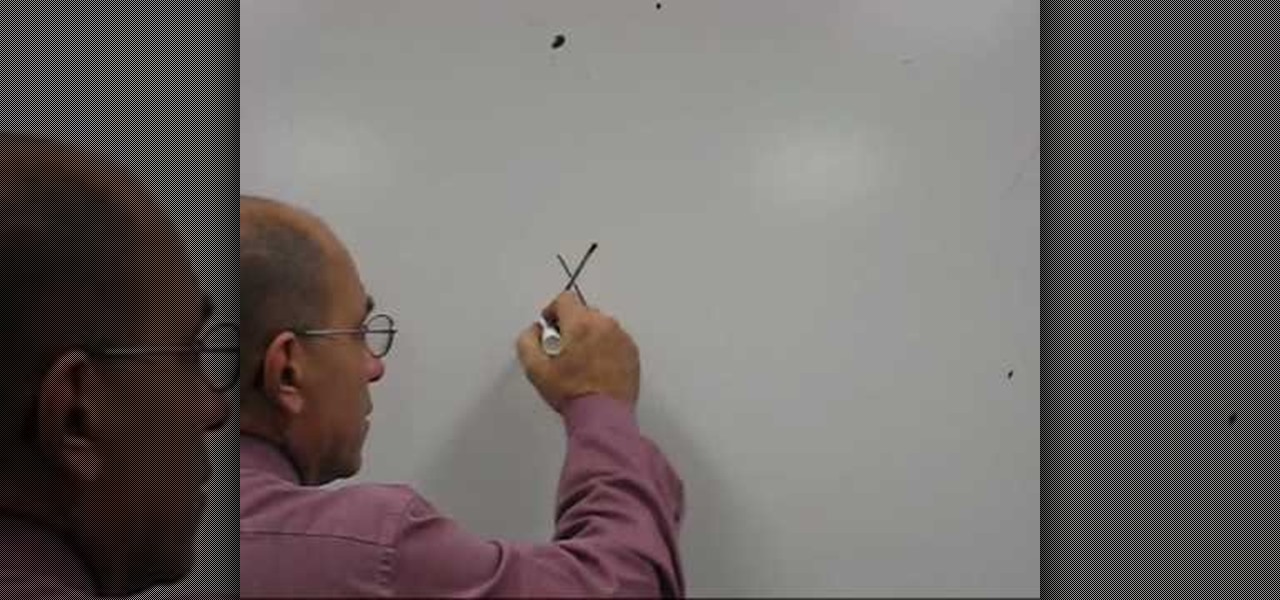
How To: Multiply and divide to solve equations
This video teaches students how to multiply and divide to solve equations in algebra. The teacher made this video specifically for his class because he points out page numbers from the textbooks that the students can go back and review. He is standing in front of a dry-erase board explaining various examples. This video is intended for people who are very new to this concept because he progresses very slow through his examples and tends to repeat himself. I think this is great for students wh...
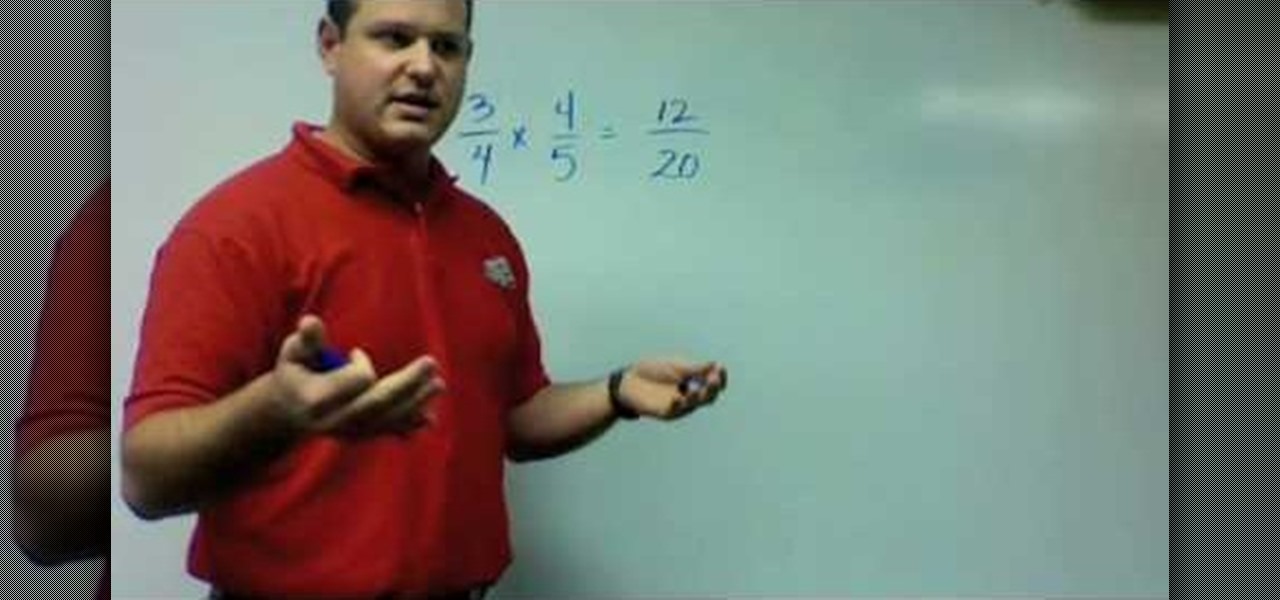
How To: Multiply two fractions
Fractions can look scary. But, don't worry, their bark is not as big as their bite! In this tutorial, learn how to multiply two fractions and simplify the answer into the smallest possible outcome. The basic process is to multiply straight across. Multiply the numerator times the numerator and the denominator times the denominator. You will arrive at a new fraction, from there you can simplify into the most tidy form of the fraction.

How To: Graph inequalities
Learn the correct method for graphing inequalities on a number line. Inequalities are, simply, mathematical comparisons between numbers or expressions. Numbers and other expressions can be greater than, less than, and/or equal to other numbers or expressions. Typically, this is indicated in mathematics through the use of the less-than (<) and greater-than (>) signs, along with the greater-than-/less-than-or-equal-to signs. Using other special notations, which you will learn in this video, the...

How To: Find the area of rectangles, triangles & rectangles
In this tutorial the author shows how to find the area of Rectangles, Triangles and Parallelograms. He says that an area of a figure is nothing but the amount of space taken up by that figure. He now explains that the area of rectangle is length times the breadth. He demonstrates it with an example. Now he says that an area of a parallelogram is base times height. He also demonstrates how to find the area of a parallelogram. Finally he shows the area of a triangle is half times the product of...
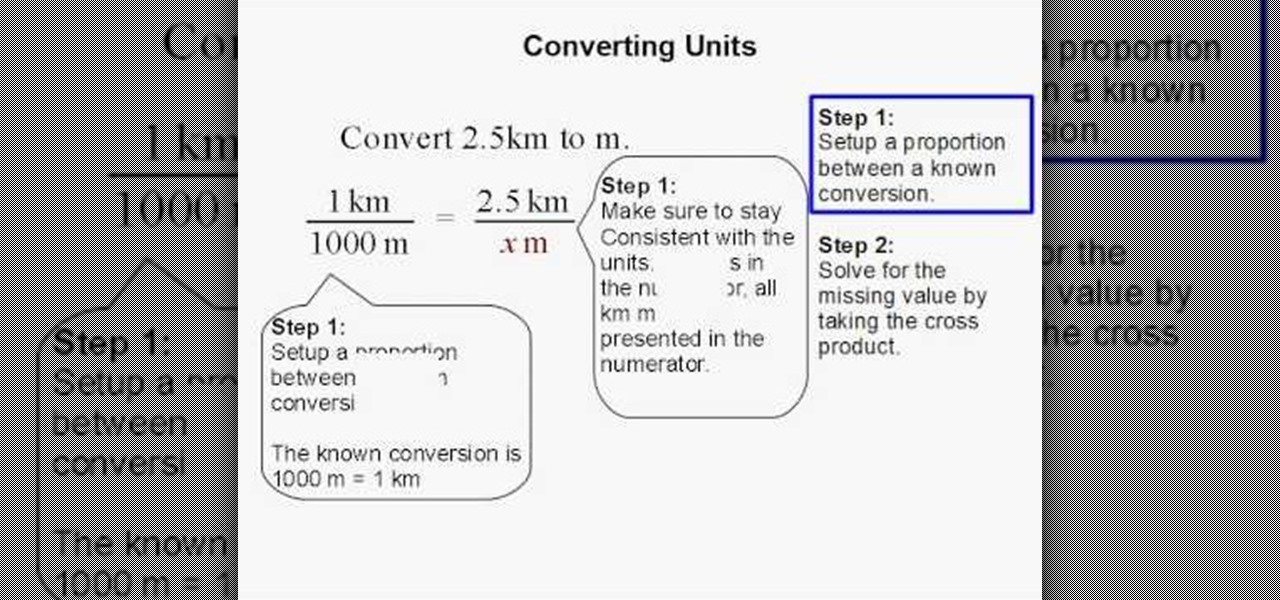
How To: Convert units of measurement
This video shows you how to easily convert units. The first step you have to do is setup a proportion between a known conversion (e.g.. convert 2.5 km to m: 1km = 1000 m, => 1 km/1000 m = 2.5 km/X m). The second step you have to do is solve the equation by taking the cross product and find out the missing value (x). (e.g.. 1 km/1000 m = 2.5 km/X m <=> 1 x X = 1000 x 2.5 <=> x=2500 m). That's it! Good Luck!

How To: Do two step math problems
Learn how to do two step math problems with this video tutorial.
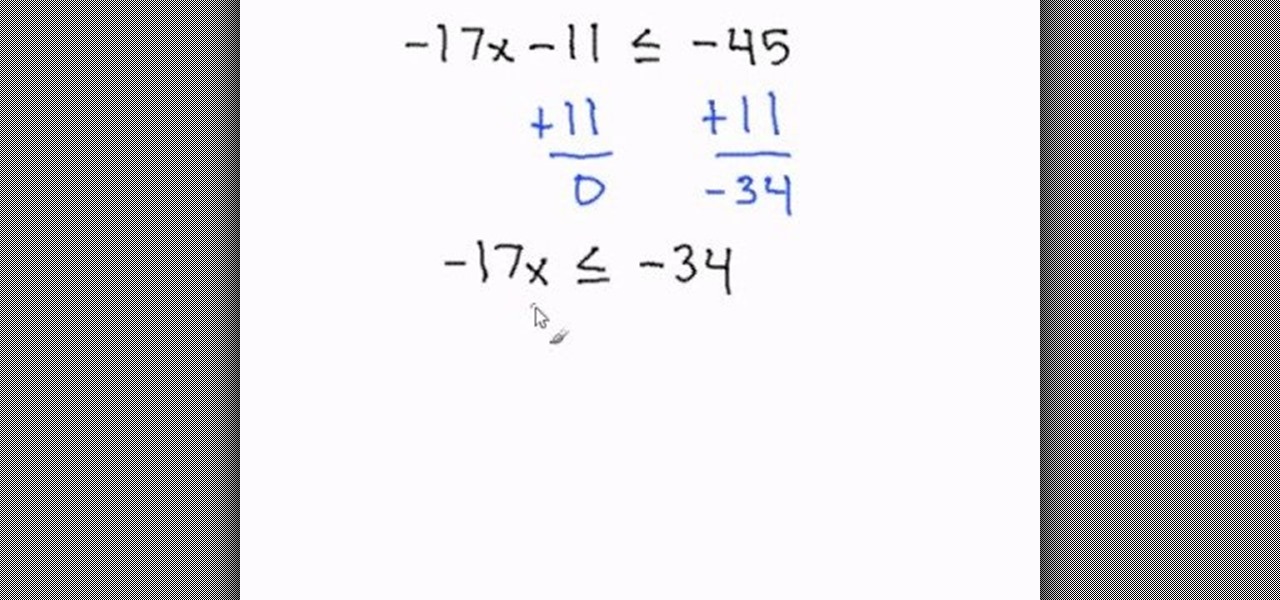
How To: Solve multi-step inequalities
In this tutorial the instructor shows how to solve multi-step inequalities. He explains the first rule of solving inequalities, stating that when you divide both sides by a negative sign, the inequality of the equations changes to the opposite. He goes on and explains this rule by solving a small inequalities equation and arriving at the result. So if you are looking to learn how to solve inequalities, follow the procedure given in this tutorial.
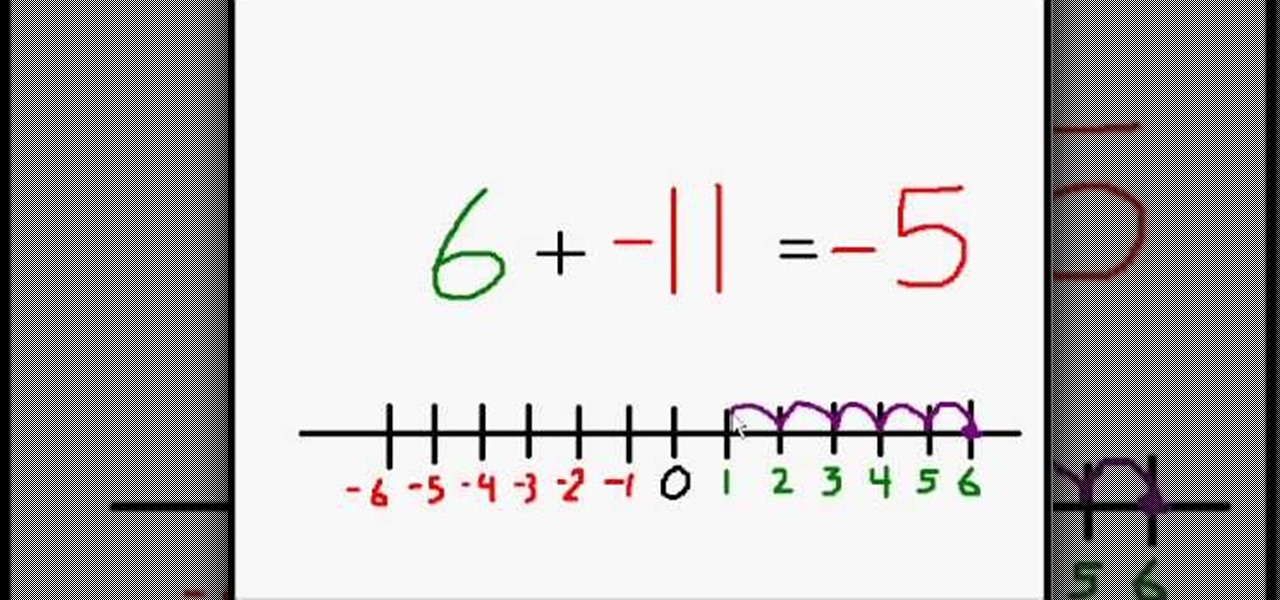
How To: Add positive & negative numbers
This explanation of positive and negative signs in addition is beneficial and easy to understand for young school aged children. The tutor of this video explains briefly about what to do with the different signs on both side of addition problem. The number line helps the viewer of this video to visually understand the concepts discussed. The tutor explains the direction of number line evaluation is dependent on the left side operand, which is also used to understand the concept of a number line.

How To: Find the volume of a cube easily
In this tutorial the author shows how to find out the volume of a cube. The author shows first to mark the length of the cube and substitute it in the formula for volume of the cube which is s*s*s, where s is the length of the cube. Therefore the volume of a cube is nothing but the length of the cube multiplied to it self three times. By following the method given in this tutorial you can easily compute the volume of a cube with a given length.
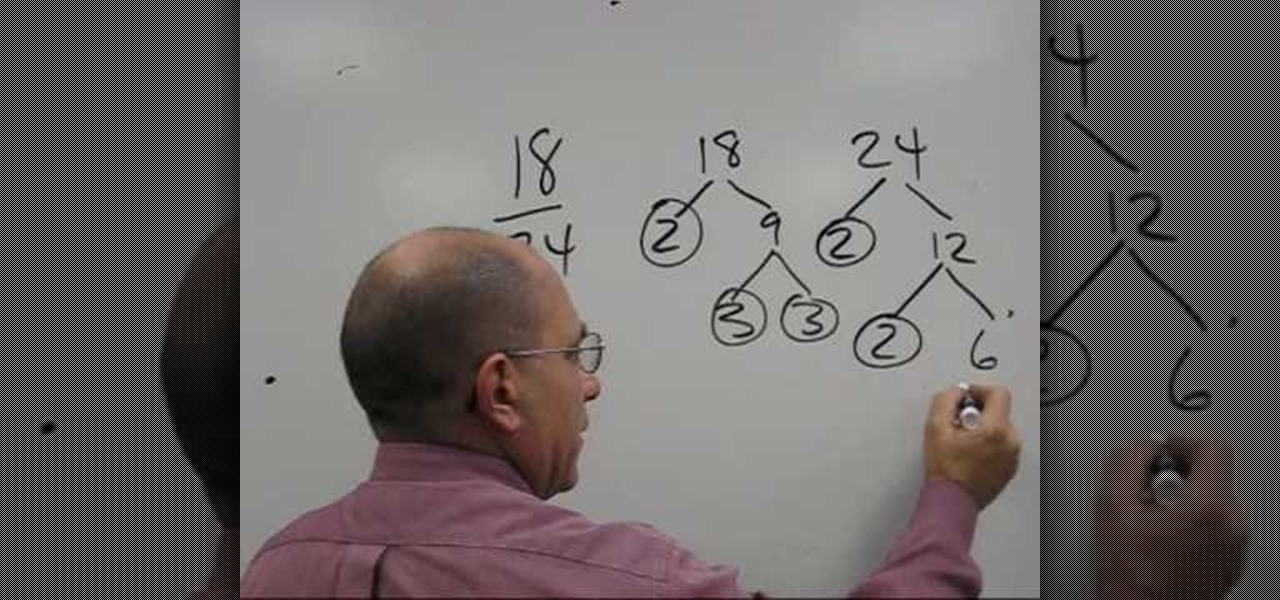
How To: Reduce fractions in math problems
In this math tutorial, you will learn how to reduce fractions using the prime factoring method. The narrator, a math teacher, of the video begins by defining what prime numbers are. This is important to know. When reducing fractions you need to reduce both the numerator and the denominator down to numbers that cannot be reduced by any other numbers but 1 and itself (prime numbers). The method the video teaches is to find the prime factors of both numerator and the denominator to simplify the ...
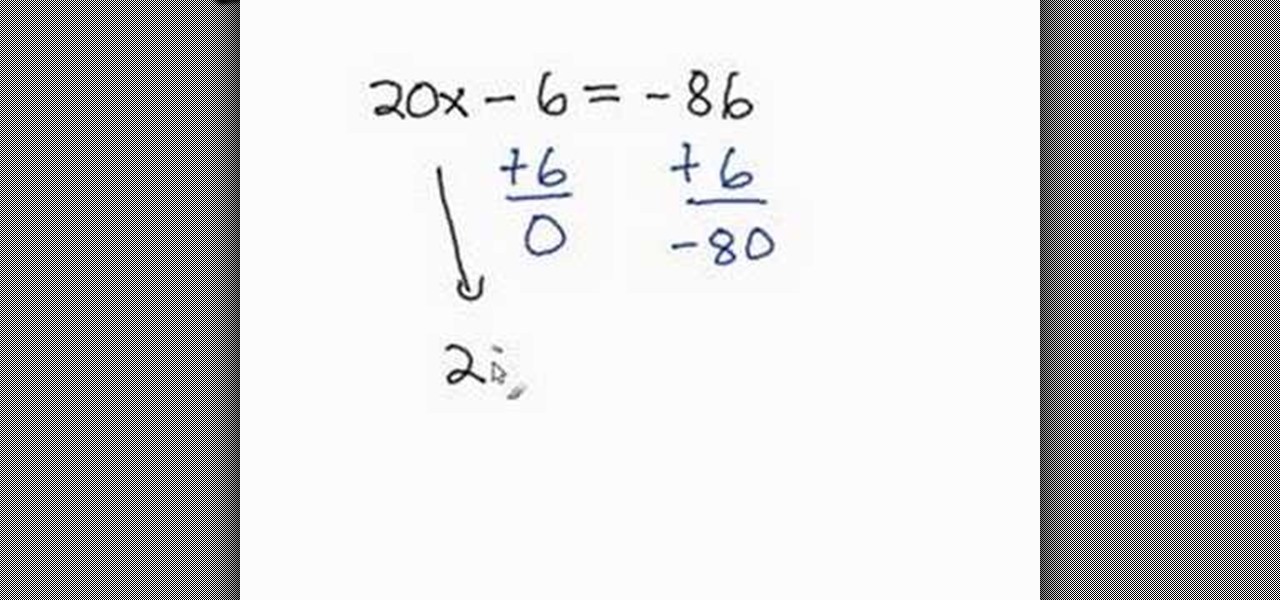
How To: Solve a two-step equation
This video is a detailed step by step explanation as how to solve a two step equation. The video provides an example of how to go about a two step equation problem and the steps necessary in order to solve for the value of one of the variables. This video uses very simple mathematical terminologies, therefore, most people should be able to understand and learn the concept easily. The video is very helpful and recommended to anyone who plans on taking algebra in the near future.
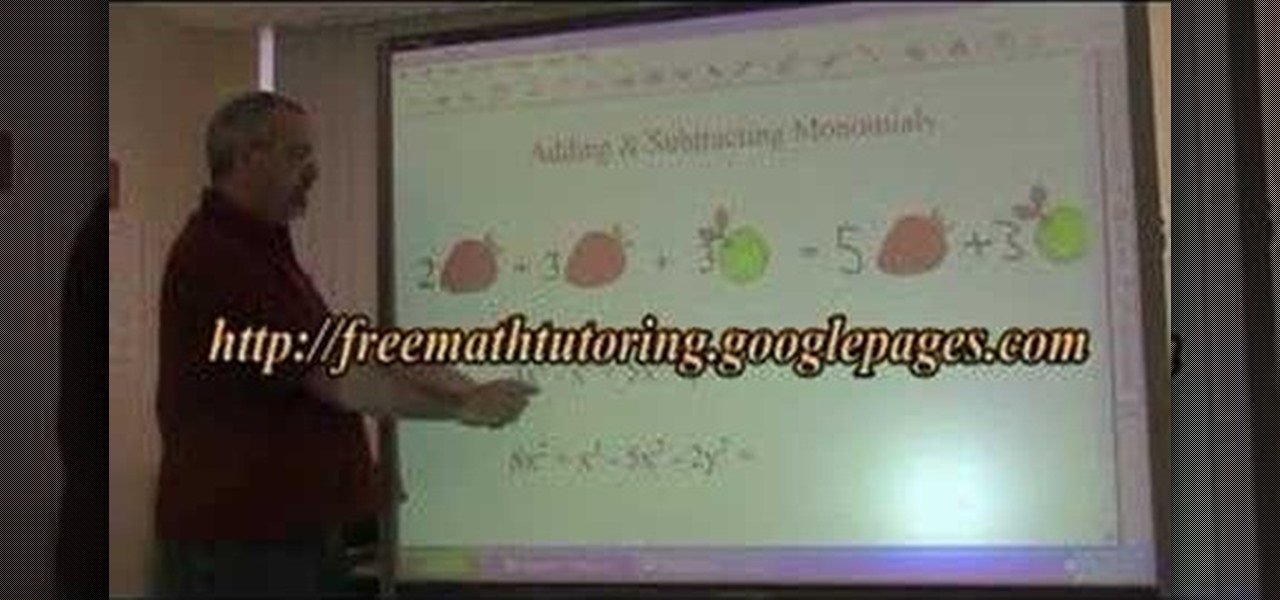
How To: Add & subtract monomials in polynomials
In this video the tutor shows how to add and subtract monomials. He says that to add or subtract monomials they have to be similar terms. Similar terms are those that have same variables and equal exponents to the variables. He shows how to do this using illustrative diagrams and solves a couple of sample problems. He adds a few monomials with similar terms and also explains how to subtract a few monomials. This video gives an introduction to similar terms and how to add and subtract monomials.

How To: Calculate percentages
Learn how to calculate percentages with this easy video tutorial! One of the easiest way to calculate percentages is as follows:
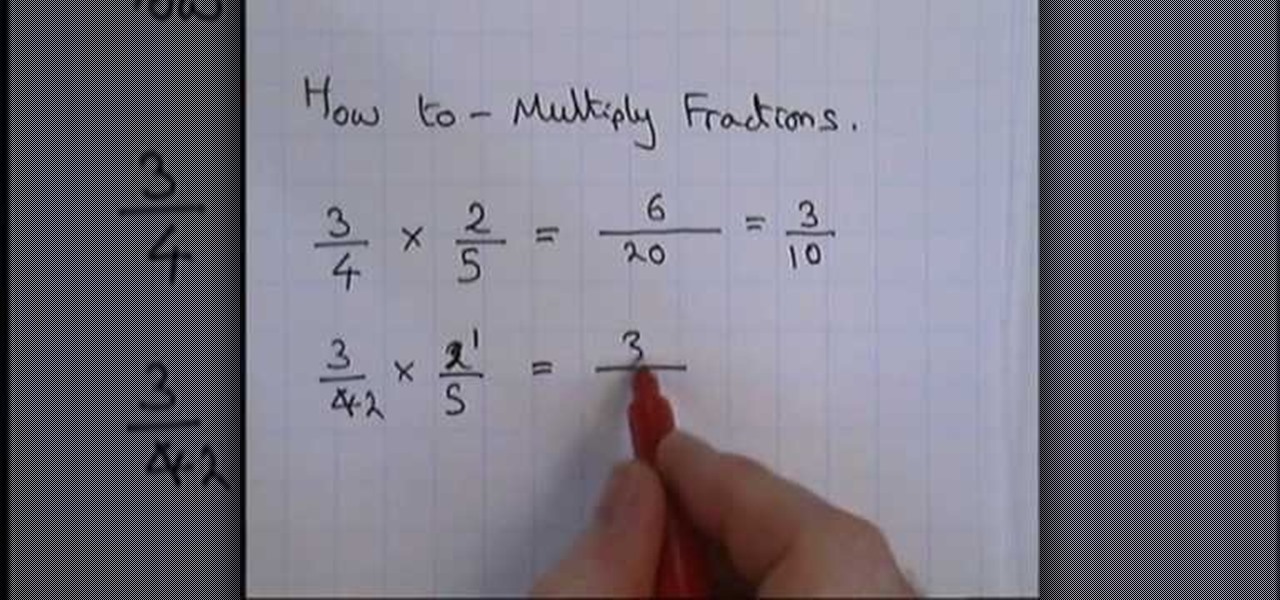
How To: Multiply simple fractions
Watch this video to learn how to multiply fractions by fractions. First multiply the top numbers together. For example, if you have 3/5 * 4/7, multiply 3 * 4 and put your product on top of the fraction you will get as a product. Next, multiply the bottom numbers together and put them on the bottom of your resulting fraction. Next see if you can reduce your product to simplify it. You could also do the reducing step first by canceling out any common factors in the numerators and denominators o...




